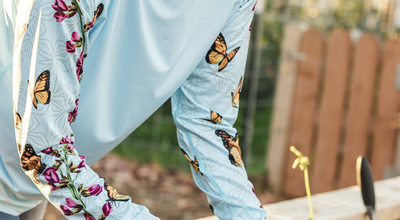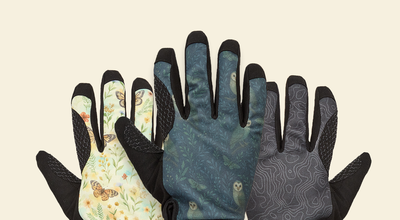Growing Your Own Garden: All About Starting from Seeds and Cuttings
As a gardener, you may already know that growing plants from seeds and cuttings is inexpensive to fill your garden with beautiful flowers, herbs, and vegetables. Not only will the knowledge and know-how of growing from seeds and cuttings save you money, but it will also open up the potential to grow a wide variety of plants that may not be available at your local nurseries and hardware stores.
In this article, we will explore the various methods of growing plants from seeds and cuttings, as well as provide helpful advice to help ensure success.

Growing from Seeds
Let’s start at the source. Here are some key steps to successfully growing your plants from seeds:
Preparing the Seeds
Before planting, it is essential to prepare your seeds properly. Some seeds may require scarification, stratification, or soaking before planting to improve germination rates.
- Scarification involves nicking or scratching the seed coat to allow water to penetrate.
- Stratification involves storing the seeds in a moist, cool environment for a period of time to mimic winter conditions.
- Soaking seeds in water for a specified amount of time can also help to soften the seed coat and improve germination.
Sowing Outdoors vs. Under Protection
When deciding whether to sow your seeds outdoors or under protection, consider the type of plant and the climate in your area. Some plants, such as tomatoes and peppers, do better when started indoors and then transplanted outside once they have grown to a certain size. Other plants, such as sunflowers and zinnias, can be directly sown in the garden.

Sowing Fine vs. Large Seeds
The size of your seeds will also determine how you sow them. Fine seeds, such as petunias and snapdragons, can be mixed with sand or vermiculite to help distribute them evenly and then sprinkled over the soil surface. Large seeds, such as pumpkins and beans, can be planted individually.
Seed Viability
When purchasing seeds, it is crucial to consider their viability or the likelihood that they will germinate. The viability of seeds decreases over time, so be sure to purchase fresh seeds each year.
Seedling Care
Once your seeds have germinated and become seedlings, it is important to care for them properly. This includes providing adequate light, water, and nutrients and thinning or picking out the weaker seedlings to give the stronger ones room to grow.

Hardening Off
Before transplanting your seedlings outdoors, it is important to harden them off, or gradually acclimate them to outdoor conditions. This can be done by gradually increasing their exposure to sunlight, wind, and other environmental factors over a period of several days.
Potting Up
When your seedlings have grown too large for their original containers, it is time to pot them up into larger containers. This will give the roots more room to grow and give the plants the space they need to continue developing.
Growing from Cuttings
Growing from cuttings is another popular method of propagation for many gardeners and farmers. This technique involves rooting a cutting from an existing plant and growing it into a new one. Cuttings can be taken from both woody and herbaceous plants, and there are several different types of cuttings you can use to propagate a plant, including:
- Softwood cuttings
- Hardwood cuttings
- Semi-ripe cuttings
- Broadleaf cuttings
- Root cuttings
- Layering
Each cutting type has its unique method for rooting and growing into a new plant.

In our next section, we'll explore these methods in more detail.
Softwood Cuttings
Softwood cuttings are taken from the soft new growth of the current year. These cuttings root relatively quickly and are ideal for plants that are difficult to grow from seed. Some common examples of plants that can be grown from softwood cuttings include roses, lavender, and hydrangeas.
Hardwood Cuttings
Hardwood cuttings are taken from the mature wood of the plant and are usually taken in the fall or winter when the plant is dormant. This type of cutting is ideal for woody shrubs and trees and is the most reliable method of propagation for many species.
Semi-Ripe Cuttings
Semi-ripe cuttings are taken from new growth that has begun to mature but is not yet fully ripe. These cuttings are ideal for many perennials and are a good alternative to softwood cuttings if the plant's softwood is unavailable.
Broadleaf Cuttings
Broadleaf cuttings are taken from plants with large leaves and propagated by rooting the leaf in water or rooting hormone. Some common examples of plants that can be grown from broadleaf cuttings include African violets and coleus.
Root Cuttings
Root cuttings are taken from the roots of the plant and are typically used for perennials and shrubs. This type of cutting is a good option if you want to propagate a mature plant, and it is easy to root, making it a popular choice among gardeners.

Common Problems and Questions
When growing from cuttings, there are a few common problems and questions that you may encounter. Here are some of the most common answers to help you get started:
Q: Why aren't my cuttings rooting? A: There could be several reasons why your cuttings aren't rooting. Some common causes include insufficient moisture, lack of proper lighting, and the cuttings being too thick or too long. Make sure to keep the cuttings moist, provide proper lighting, and take the cuttings at the right length to increase the chances of success.
Q: How often should I water my cuttings? A: The frequency of watering will depend on several factors, including the humidity and temperature in your growing area, the type of cutting, and the medium you are using. As a general rule, you should water your cuttings when the top inch of soil feels dry to the touch.
Q: How long does it take for cuttings to root? A: The time it takes for cuttings to root will vary depending on the type of cutting, the plant species, and the environmental conditions. On average, it can take anywhere from a few days to several weeks for cuttings to root.

Whether you grow from seed or cuttings, you can use many different methods and techniques to propagate your plants. By understanding the basics of seed preparation, sowing, and growing from cuttings, you can ensure a successful harvest and increase the size of your garden or farm. With time and patience, you can turn your seeds and cuttings into thriving additions to your garden.












